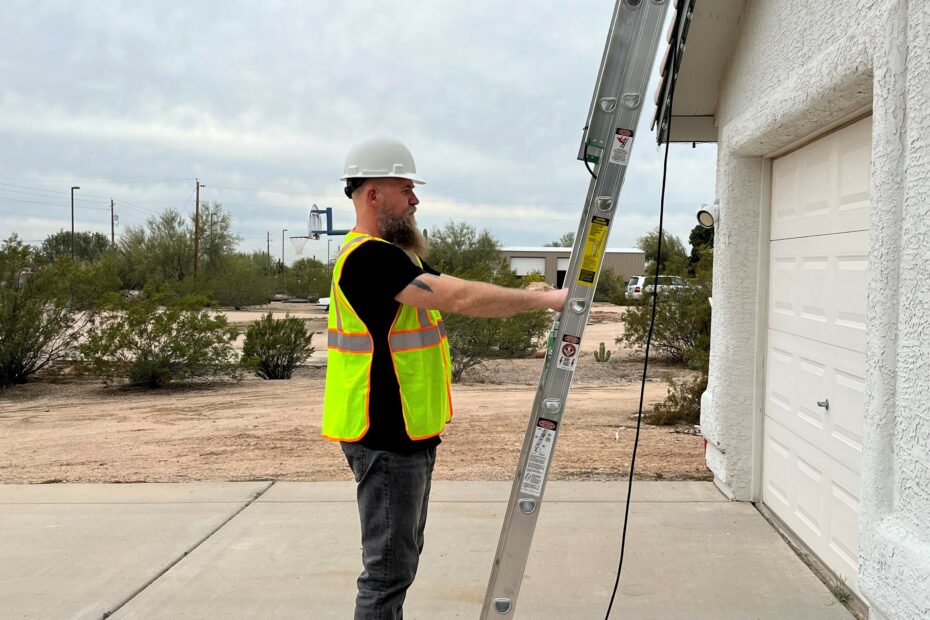Ladder Safety – Choosing your ladders
Choosing the right ladder for the job is essential for safety and efficiency. There are several factors to consider when selecting a ladder, including the height you need to reach, the type of work you will be doing, the weight capacity of the ladder, and the environment in which you will be working.
Factors to Consider When Choosing a Ladder
The Occupational Safety and Health Administration (OSHA) has specific ladder standards to ensure worker safety in 29 CFR 1926 Subpart X for Construction Stairways and Ladders, 1926 Subpart L for Scaffolds; and 29 CFR 1910.23 for General Industry. Some factors to consider when choosing a ladder are:
- Height – Consider the maximum height you need to reach and choose a ladder that can safely support that height. For example, the side rails of an extension ladder should extend at least 3 feet above the upper landing
- Weight Capacity – Choose a ladder with a weight capacity that exceeds your body weight and the weight of any tools or equipment you will be carrying
- Material – Choose a ladder made from durable materials such as aluminum or fiberglass, which can withstand exposure to the elements and resist corrosion
- Safety Features – Look for ladders with safety features such as non-slip rungs, locking mechanisms, and stabilizers to prevent slipping or tipping
- Environment – Consider the environment in which you will be working. If you will be working around electricity, choose a ladder made from non-conductive materials to prevent electrical shock
Types of Ladders
Depending on the type of work, some ladders will be better suited than others. Some common ladder types are:
- Stepladders: A self-supporting ladder with steps or rungs on both sides, which can be used by one or two persons
- Extension Ladders: A non-self-supporting ladder that consists of two or more sections that can be adjusted to various lengths, which are typically leaned against a structure
- Fixed Ladders: A ladder that is permanently attached to a structure and cannot be moved
- Rolling Ladders: A ladder with wheels that can be moved from one location to another.
- Articulated Ladders: A ladder that can be adjusted to different configurations, such as a stepladder, extension ladder, or scaffold
- Specialty Ladders: A ladder designed for a specific purpose, such as a platform ladder, roof ladder, or orchard ladder
It’s important to note that OSHA regulations also require employers to train employees on the proper use and handling of ladders, inspect ladders regularly for defects, and provide appropriate personal protective equipment when working on ladders.
Load Capacity
The load capacity of a ladder includes the weight of the person using the ladder, as well as any tools or materials being carried. Exceeding the load capacity of a ladder can result in the ladder failing, which can cause serious injury or death. Therefore, it’s crucial to choose the right ladder with an appropriate load capacity for the job and follow all OSHA safety standards.
OSHA has specific load capacity requirements for ladders to ensure worker safety. The following information describes the load capacity requirements according to OSHA:
- Type IAA: This ladder has a duty rating of 375 pounds and is designed for special duty industrial use
- Type IA: This ladder has a duty rating of 300 pounds and is designed for extra-heavy-duty industrial use
- Type I: This ladder has a duty rating of 250 pounds and is designed for heavy-duty industrial use
- Type II: This ladder has a duty rating of 225 pounds and is designed for medium-duty commercial use
- Type III: This ladder has a duty rating of 200 pounds and is designed for light-duty household use
In conclusion, choosing the right ladder is crucial for safety and efficiency. Consider the type of ladder, weight capacity, and other factors when making your selection. Always follow the manufacturer’s instructions for use and maintenance to ensure the ladder remains safe and functional. Remember, when it comes to ladders, safety always comes first.
